Woman Shows the High Level of Bacteria Found on Plane Headrest
People are grossed out after TikToker reveals how much bacteria is found on planes.

If you didn’t wipe down their tray table and headrest or carry hand sanitizer on a plane, you might want to start now. TikToker, who is a Master of Science student, posted a viral clip showing the amount of bacteria planes can have, and viewers were horrified.
The woman, who goes by her initials CM, swabbed samples from three different areas on her flight and revealed how much bacteria can linger on surfaces.
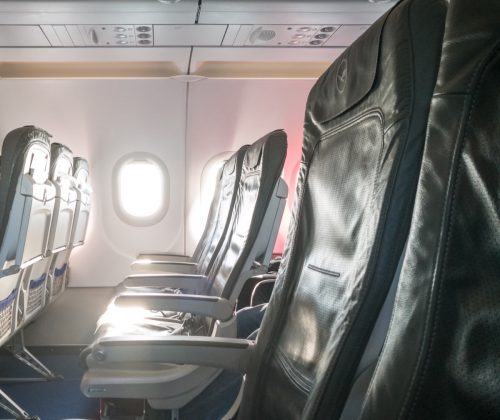
CM has a TikTok series called “What Will Grow?” In a recent clip, she took bacteria samples from the tray table, bathroom handle, and headrest. She then placed the samples in three separate Petri dishes incubated in a lab. Next, she revealed the results and identified the multiple types of bacteria found.
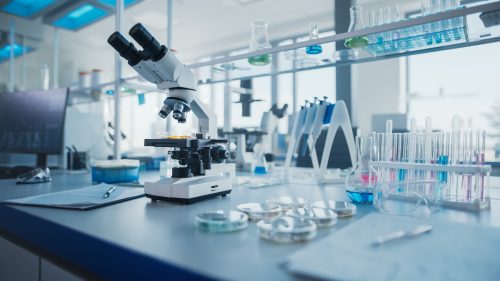
The results showed a lot of bacteria in all three places that were swabbed. But CM shared there’s nothing to be concerned about. “Much better than expected, all pretty normal flora bacteria,” she wrote.
In response to a viewer asking if all bacteria was bad, she replied, “No actually most of it is very normal and not harmful!”
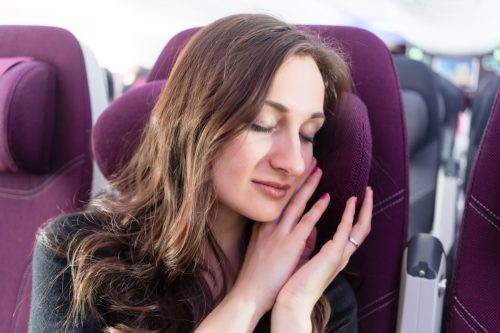
At the end of the clip, CM identified the different types of bacteria found in each place she took a sample from. She started with plane headrests. Here is what she found there:
–M. luteus (Micrococcus luteus): is found in soil and water. It can be found on human skin and tissue in the oropharynx.
–Streptococcus sp.: Streptococcus can cause different infections, according to the Centers for Disease Control and Prevention, such as strep throat, Scarlet Fever, Streptococcal Toxic Shock Syndrome, and more.
–N. subflava (Neisseria subflava) -found in the nasopharynx (the top of the throat connecting the nose to the respiratory system). According to the Jama Network, this bacteria has been linked to Meningitis in children.
–M. Smegmatis (Mycobacterium smegmatis): found in human genital secretions, as well as soil, dust, and water.
4
Tray Tables Are Not Ideal

Airplane tray tables, unsurprisingly, are not free of surprising bacteria. CM identified Subtilis (Bacillus subtilis) — commonly found in water, soil, air, and plant roots.
5
Here’s What She Found on Bathroom Lock and Handle
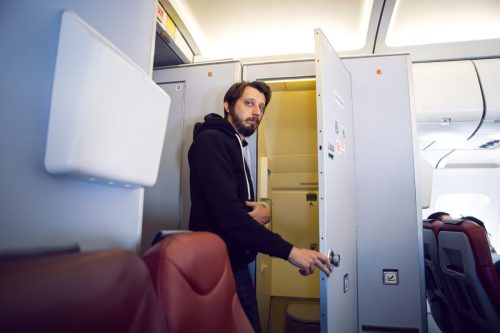
If you are terrified of visiting a plane’s bathroom, you are right. Here’s what CM found on bathroom lock and handle.
–Staphylococcus sp.: causes staph infections and found on the skin or in the nose of humans.
–Streptococcus sp: The Texan Human Health and Services state, “Streptococcal bacteria can cause a variety of illnesses that range from mild to severe. Group A streptococcal bacteria cause diseases ranging from streptococcal sore throat (strep throat) to necrotizing fasciitis (flesh-eating disease). They can also cause scarlet fever, rheumatic fever, puerperal (postpartum) fever, and streptococcal toxic shock syndrome.”
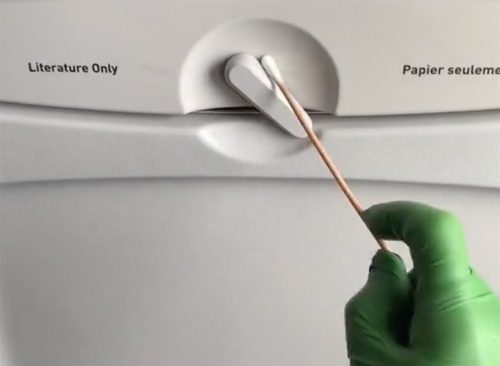
After publishing the bacteria findings, several people commented, expressing their disgust. “Be right back, need to go wash my hair …. Again,” one person wrote. “This is why I always wipe the tray table- the tv too.” Someone else noted: “I figured the bathroom would be wayyyy worse!”
Another added, “Me deciding I want to know as you swab everything, although I already have contamination anxiety on airplanes.” Someone commented, “I will now be bringing wet wipes on my flight this summer.”
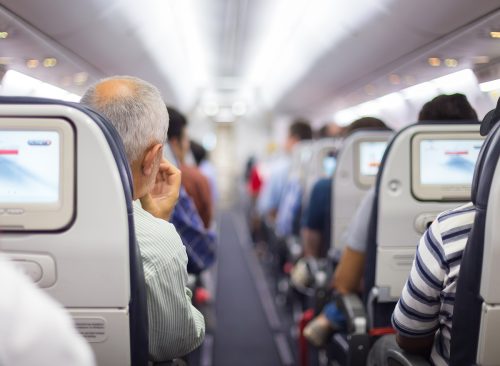
According to the peer-reviewed study published in Proceedings of the National Academy of Sciences, traveling can come with a health risk. “Over a dozen cases of inflight transmission of serious infections have been documented, and air travel can serve as a conduit for the rapid spread of newly emerging infections and pandemics. Despite sensational media stories and anecdotes, the risks of transmission of respiratory viruses in an airplane cabin are unknown.”

All travelers must have their luggage and personal items screened before heading to their gate, and TODAY revealed there is E. Coli, klebsiella, and Acinetobacter in the plastic bins in the TSA security line.
“They’re all bacteria that we find normally in our intestines, so we call them fecal bacteria,” Dr. Susan Whittier of Columbia University Medical Center said. “It just means that those surfaces are contaminated.”














